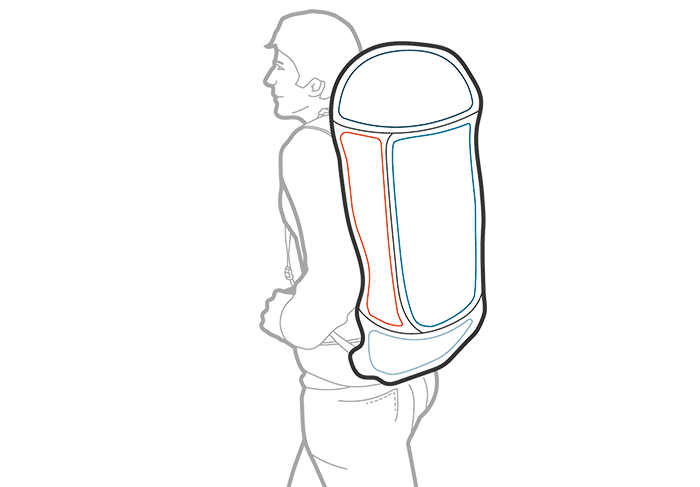Video
Packing a backpack correctly
Subchapter: Pack a backpack
Packing a backpack correctly
Alpine climbers need to pack light. Whether for the approach or on the rock face: To ensure maximum freedom of movement, only take the equipment that you really need. It is important to pay attention to every single gram when packing your backpack. You’ll also need to pack it smartly and ensure it fits optimally.
With large backpacks, it can be tempting to use the full capacity. That’s why climbing backpacks with a volume of 25 liters are ideal. All the important equipment will fit in one of these. For alpine route, it should have a slim fit, be tight-fitting and lightweight. Useful additions such as a side zipper are also helpful, so that you can quickly access the equipment you are looking for. Your equipment should be stored in your backpack so that it has an optimal center of gravity and important equipment is always easily accessible.
We divide climbing backpacks into four “packing areas”:


Check your equipment list
Got everything? Check your equipment with the ORTOVOX equipment list!
Adjusting your backpack
The better a backpack is adjusted to fit an individual climber, the easier it is to carry and provide sufficient freedom of movement on the rocks.
The following five steps describe how to optimally adjust your climbing backpack:















